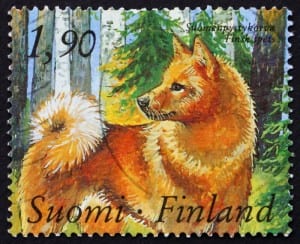 Human fingers have little ridges that form our unique finger prints. Did you know that dogs have something similar? They don’t have fingertips, of course, but every dog’s nose is unique. There is only one, and no other like it.
Human fingers have little ridges that form our unique finger prints. Did you know that dogs have something similar? They don’t have fingertips, of course, but every dog’s nose is unique. There is only one, and no other like it.
The nose print of a dog is a unique as a fingerprint. If you take a peek at your dog’s nose through a magnifying glass you’ll see all sorts of patterns and creases. They are never the same between two individuals.
Thus far, nose prints aren’t used for dog identification. There’s no central dog database with nose prints, but rumors have it that companies are looking into offering nose print identification.
The dog’s nose is remarkable in more ways. An average dog’s sense of smell is about 1,000 times better than a human’s. Some dogs can smell dead bodies under water, they can smell termites, and natural gas buried under 40 feet of dirty. They can also be taught to detect cancer too small to be detected by medical equipment, and can sense lung cancer through a person’s breath.



 Everyone who knows a dog has seen the bedding dance; walking around and around before lying down with a contented sigh. Ever wonder why they do that?
Everyone who knows a dog has seen the bedding dance; walking around and around before lying down with a contented sigh. Ever wonder why they do that? The Finnish Spitz – or Suomenpystykorva – is the national dog of Finland, hailed in many patriotic songs. These small and hardy dogs are perhaps most known for their barking abilities. They can bark up to 160 times a minute!
The Finnish Spitz – or Suomenpystykorva – is the national dog of Finland, hailed in many patriotic songs. These small and hardy dogs are perhaps most known for their barking abilities. They can bark up to 160 times a minute! Love dogs? Here are some fun and little known facts about our furry friends.
Love dogs? Here are some fun and little known facts about our furry friends. 1. Teeth:
1. Teeth: The Pekingese is a very old breed, traditionally associated with Chinese emperors. Here are seven fun facts about the breed.
The Pekingese is a very old breed, traditionally associated with Chinese emperors. Here are seven fun facts about the breed.


